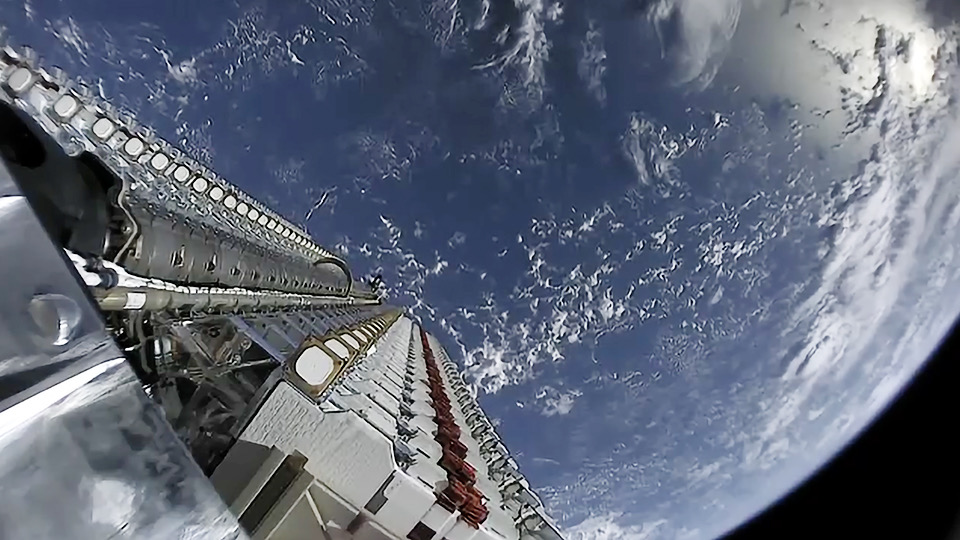
SpaceX’s ambitious project to create a global satellite broadband internet network continues, with the first batch of satellites now mostly in place and ready to start testing.
The first batch of 60 satellites were launched into space last month, and now 57 of these are working as intended, SpaceX announced. The satellites are in communication with the Earth-based ground stations like the home base of the operation in Redmond, Washington.
The other three satellites lost communication during the launch and have not been heard from since, and will orbit the planet for a while before falling back to Earth and burning up in the atmosphere.
Forty five of the satellites are in their final positions at an altitude of 342 miles, while another five are currently moving into position from their current location at 273 miles altitude, and five more are undergoing checks before making their final movements. The movements are made using the satellite’s onboard krypton ion thrusters.
SpaceX will simulate the effects of the satellite’s end of life, to allay concerns about space debris. The final two satellites will be deliberately de-orbited to simulate what would happen when a satellite reaches the end of its lifespan.
Starlink is now ready to enter a testing phase, in which the company will test streaming videos and playing games over the internet satellite connection. “Now that the majority of the satellites have reached their operational altitude, SpaceX will begin using the constellation to start transmitting broadband signals, testing the latency and capacity by streaming videos and playing some high-bandwidth video games using gateways throughout North America,” it said in a statement.
This makes Starlink the “first NGSO [non-geosynchronous satellite orbit] system to operate in the Ku-band and communicate with U.S. ground stations, demonstrating the system’s potential to provide fast, reliable internet to populations around the world,” SpaceX says. This is important because being the first to operate means SpaceX has the right to select frequencies at which the network will operate if there are conflicts in future with other satellite telecommunication networks.
The Starlink project has attracted criticism, however, particularly from astronomers who are concerned that the launch of satellite networks could interfere with readings from ground-based telescopes.



